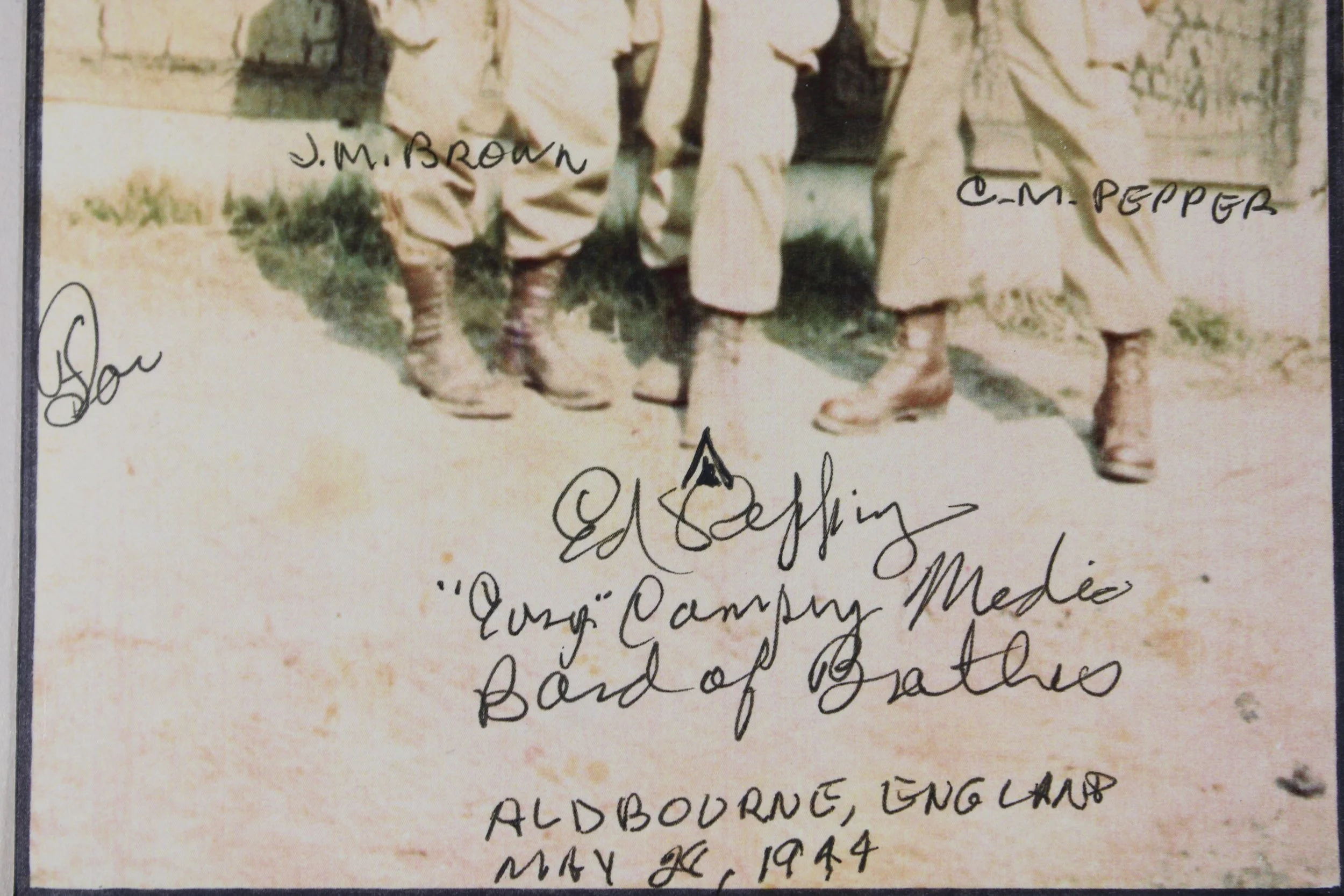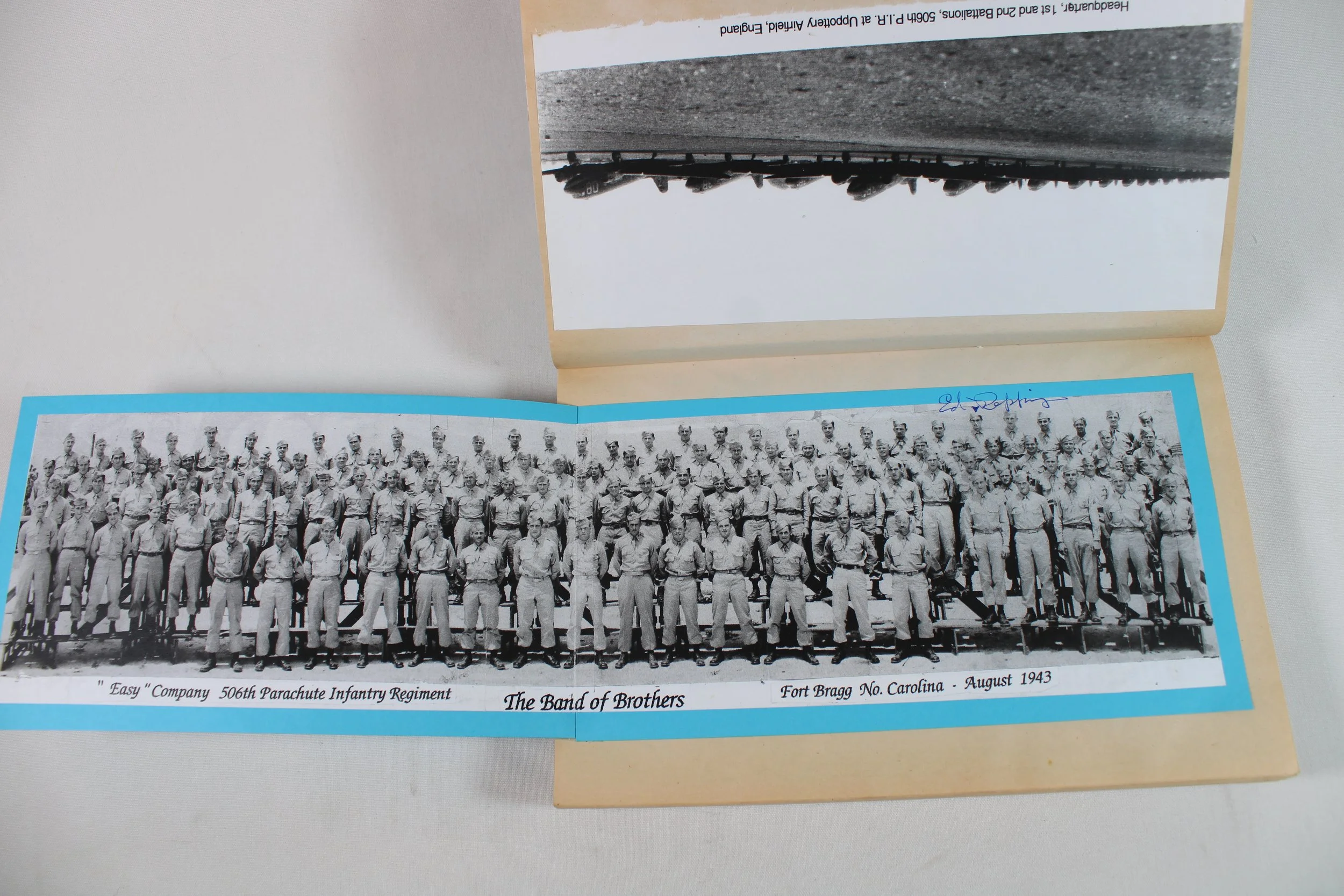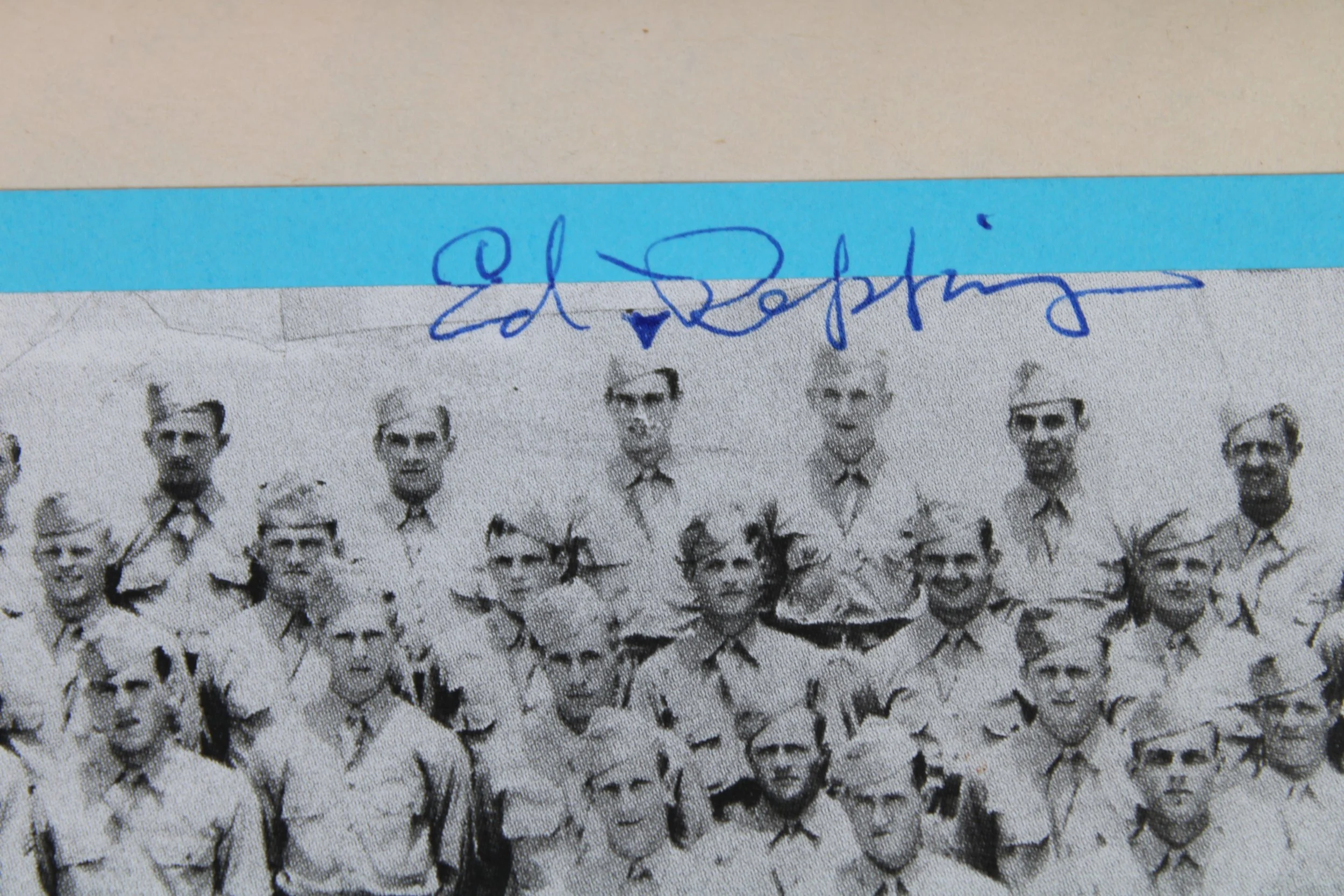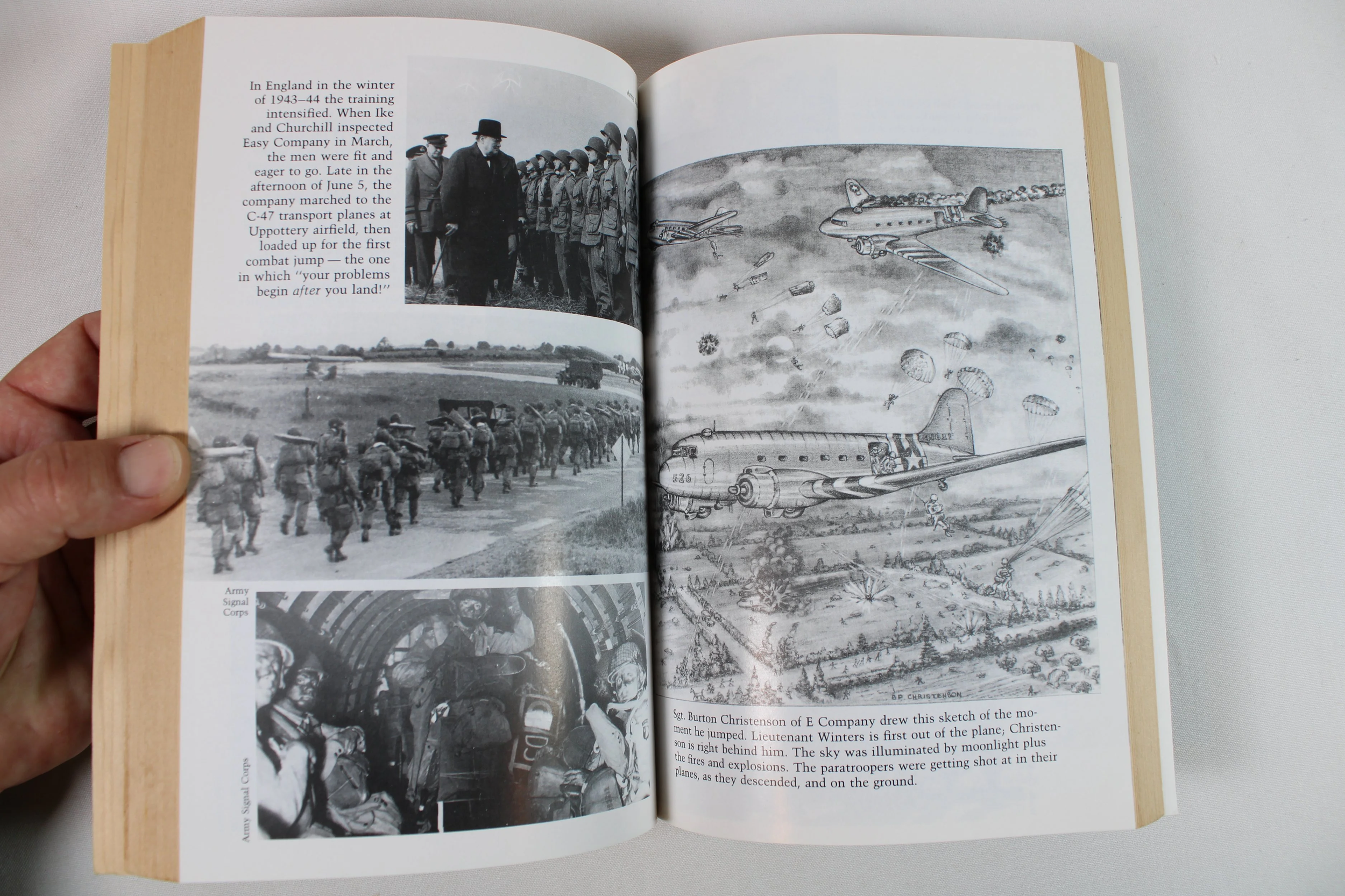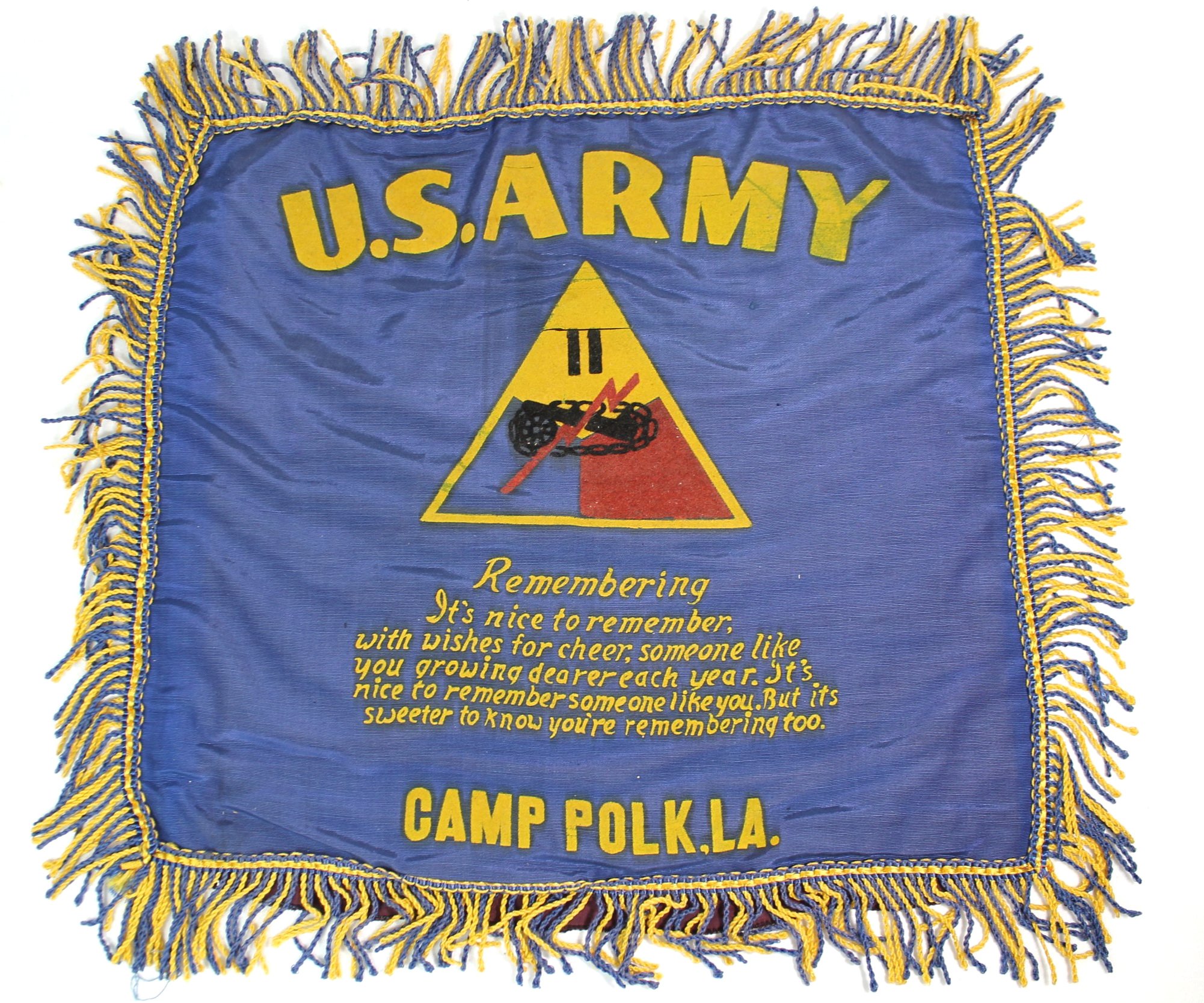 Image 1 of 3
Image 1 of 3

 Image 2 of 3
Image 2 of 3

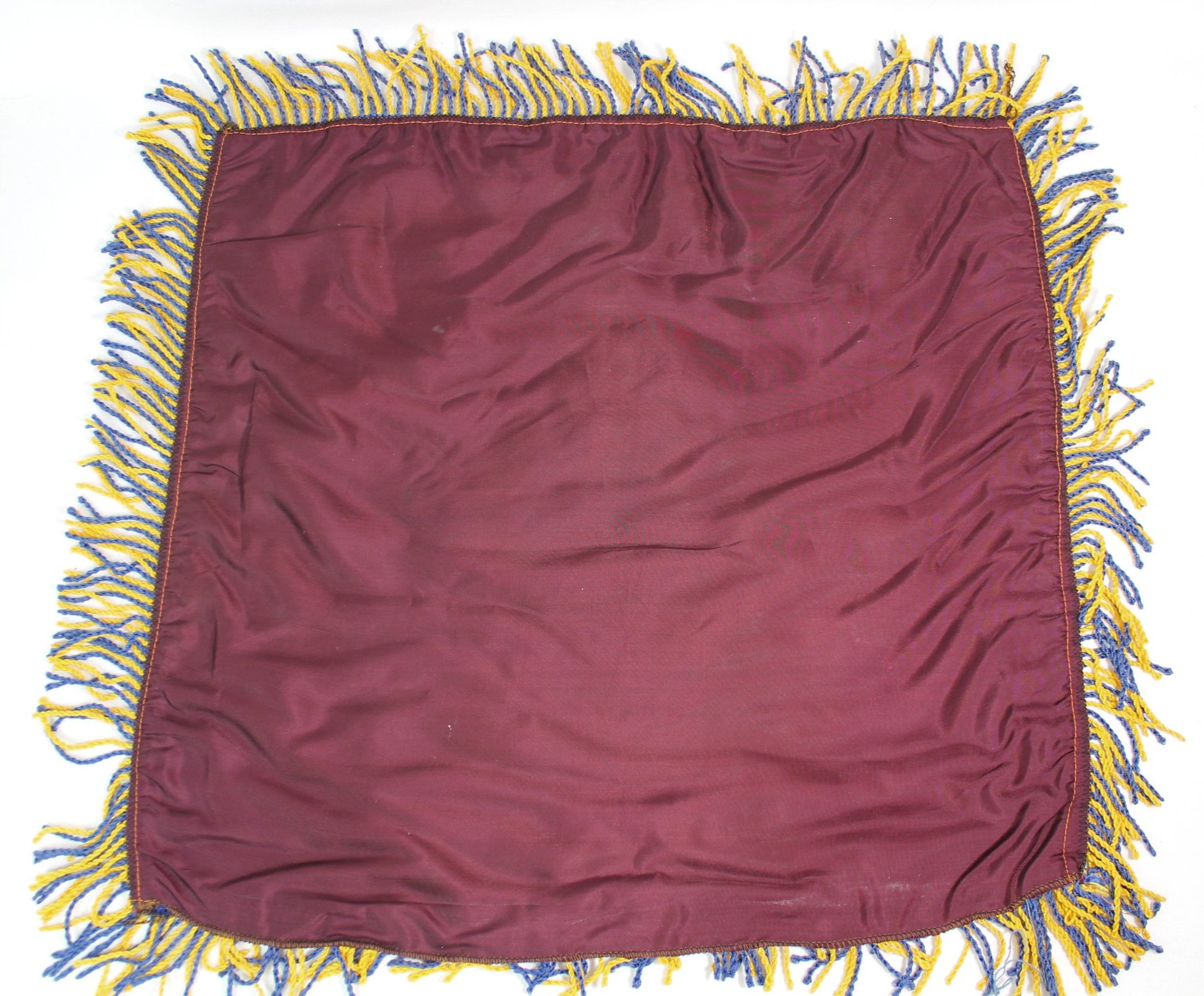 Image 3 of 3
Image 3 of 3




WWII US 11th Armored Division Homefront Satin Pillow Case Cover Polk, Louisiana
20”x20”
The Division was activated on August 15, 1942, at Camp Polk, Louisiana. Soon after the Division was formed and staffed, a period of intense training ensued, first in Louisiana, then in Texas, and finally in California. In September, 1944, the well armed and equipped Division embarked for Europe, landing in England for final staging and preparation for combat. In early December, 1944, the Division deployed to the continent, landing in France, and making preparations to attack German pockets of resistance on the coast of Brittany.
When enemy forces mounted a desperate attack in the Ardennes Forest of Belgium, the Division was rerouted, rushed across France, and committed into action in what was soon to be known as the Battle of the Bulge. The 11th Armored Division was then assigned to the US Third Army, commanded by General George Smith Patton. Upon reaching the battle zone, the Division attacked, encountering a simultaneous headlong attack by German units that were seeking to close off the recently opened corridor into besieged Bastogne. Although sustaining heavy battle casualties, the Division continued the attack, closing with US First Army units on January 16, 1945 at Houffalize, Belgium, finally terminating the "Bulge" incursion.
The Division continued to attack through Belgium, Luxembourg, and into the German Rhineland, reaching the Rhine River at Brohl and Andernach on March 9, 1945. The 11th Armored then withdrew, crossed the Moselle River at Bullay, and mounted a second drive through the Moselle-Rhine Palatinate, again reaching the Rhine River in the vicinity of Worms. This drive resulted in the capture of over 20,000 enemy combatants, who were incarcerated as prisoners of war.
The Rhine River was crossed on March 28, 1945, utilizing a pontoon bridge constructed by US Third Army forces. The Division then proceeded to attack at a blitzkrieg pace, moving first toward Berlin, and then following a southeast course, paralleling the border between Germany and Czechoslovakia. On April 26, 1945, the 11th Armored Division crossed the border into Austria, reaching Linz on May 4, 1945. The next day, the Division’s cavalry reconnaissance forces encounter and liberated the concentration camps of Mauthausen and Gusen, freeing thousands of starving and maltreated prisoners. The unspeakable atrocities that the troops witnessed in these camps bore witness to the horror of the Holocaust.
On August 15, 1945, at Gmunden, Austria, the 11th Armored Division was disbanded.
20”x20”
The Division was activated on August 15, 1942, at Camp Polk, Louisiana. Soon after the Division was formed and staffed, a period of intense training ensued, first in Louisiana, then in Texas, and finally in California. In September, 1944, the well armed and equipped Division embarked for Europe, landing in England for final staging and preparation for combat. In early December, 1944, the Division deployed to the continent, landing in France, and making preparations to attack German pockets of resistance on the coast of Brittany.
When enemy forces mounted a desperate attack in the Ardennes Forest of Belgium, the Division was rerouted, rushed across France, and committed into action in what was soon to be known as the Battle of the Bulge. The 11th Armored Division was then assigned to the US Third Army, commanded by General George Smith Patton. Upon reaching the battle zone, the Division attacked, encountering a simultaneous headlong attack by German units that were seeking to close off the recently opened corridor into besieged Bastogne. Although sustaining heavy battle casualties, the Division continued the attack, closing with US First Army units on January 16, 1945 at Houffalize, Belgium, finally terminating the "Bulge" incursion.
The Division continued to attack through Belgium, Luxembourg, and into the German Rhineland, reaching the Rhine River at Brohl and Andernach on March 9, 1945. The 11th Armored then withdrew, crossed the Moselle River at Bullay, and mounted a second drive through the Moselle-Rhine Palatinate, again reaching the Rhine River in the vicinity of Worms. This drive resulted in the capture of over 20,000 enemy combatants, who were incarcerated as prisoners of war.
The Rhine River was crossed on March 28, 1945, utilizing a pontoon bridge constructed by US Third Army forces. The Division then proceeded to attack at a blitzkrieg pace, moving first toward Berlin, and then following a southeast course, paralleling the border between Germany and Czechoslovakia. On April 26, 1945, the 11th Armored Division crossed the border into Austria, reaching Linz on May 4, 1945. The next day, the Division’s cavalry reconnaissance forces encounter and liberated the concentration camps of Mauthausen and Gusen, freeing thousands of starving and maltreated prisoners. The unspeakable atrocities that the troops witnessed in these camps bore witness to the horror of the Holocaust.
On August 15, 1945, at Gmunden, Austria, the 11th Armored Division was disbanded.














